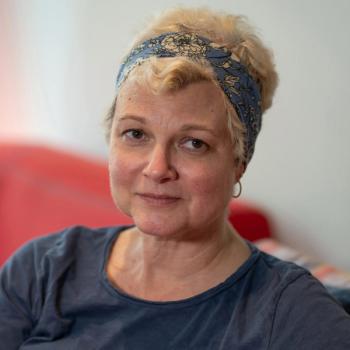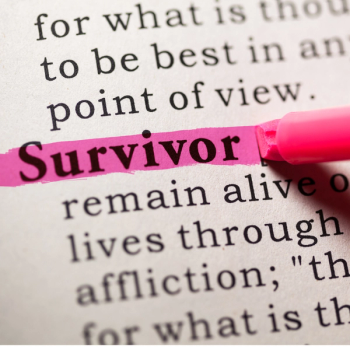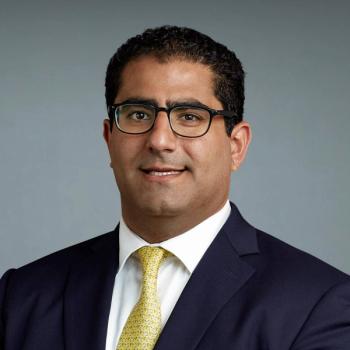
- Bonus Issue
- Volume 1
- Issue 1
Once & Again
CURE recaps the advances, trends and insights it shared in 2017.
Urine collection cups? Check. Needles for blood draws? Check. Dog? Check
Man’s best friend may not be a typical item on an oncologist’s list of tools, but as cutting-edge techniques emerge across the spectrum of cancer research and treatment, dogs are poised to lend their uncanny talents to the field of precision diagnosis.
In the spring 2017 issue, CURE featured an
The story about this line of research was one of many CURE brought to the forefront in 2017, highlighting scientific advances, care trends and insights about the state of diagnosis, treatment and survivorship. Our offerings — including advice to “snowbirds” about cancer care while
In this final issue of the year, we review some of the most compelling topics and images we presented, touching on many of the programs, decisions, ideas, care tactics, challenges and advocacy efforts that changed life for those affected by cancer in 2017.
Here, we recap lifestyle, survivorship and advocacy stories.
LIFESTYLE
What kinds of lifestyle changes or supportive programs can boost emotional and physical health for people affected by cancer? We found an array of answers to that question in 2017.
In our summer issue’s “Staying on Track," we noted that wearable fitness trackers are being explored for their potential to improve health during and after cancer treatment. These devices can track activity level, heart rate, sleep patterns and calories burned, and some allow doctors to monitor the results remotely. Researchers believe that the wearables may help doctors determine which patients are the most active and able to tolerate aggressive treatments. The devices also may pro- mote physical activity that can help patients endure therapy and fight cancer, as well as contribute to weight loss that plays a role in preventing recurrence.
“
“Most people cope by falling back on what they’ve always done, whether it’s to be spiritual, to be intellectual, to find comfort in family,” clinical psychologist Laura Howe-Martin, Ph.D., told CURE. “A few take on extraordinary things: They start charities or start running triathlons. They divorce, or they quit what they thought was their dream job. They get more religious or less religious. People who have cancer are ready — ready to make meaningful changes.”
Maybe you can’t judge a book by its cover, but, nonetheless, physical changes caused by cancer and its treatments can be emotionally difficult, and programs created to boost patient appearance often do even more to lift spirits. That was the gist of our fall cover story “
“This isn’t frivolous stuff,” said patient Linda O. Williams. “People with cancer don’t have time for nonsense. Everything we do that allows us to get through another day is important. Moments like these, that lift your spirits and make you feel beautiful, truly matter.”
Quality of life improves when side effects are kept in check, and that’s why CURE devoted 2017 coverage to strategies designed to keep patients comfortable. The spring article “
Palliative care offers another way to ease painand increase functionality in those experiencing side effects, CURE reported in “
Side effects of treatment affect not just the body and mind but also the wallet. Cancer treatments can be expensive and are not always fully covered by health insurance. Meanwhile, patients and their family caregivers may experience income loss or even bankruptcy due to the illness. Our winter article on crowdfunding, “
“We were surprised at how many people shared our story, and also at how many people we don’t even know who donated to our cause, left messages of encouragement and otherwise offered to help,” said Lauren Carman Evans, who was treated for breast cancer. “This has been one of the silver linings we’ve experienced throughout this whole ordeal.”
SURVIVORSHIP
When it comes to survivorship, there are countless issues people might confront, from treatments that continue indefinitely to long-term side effects.
We explored issues faced by people with metastatic cancer in our spring article “
A challenge that can face men after prostate cancer — as well as bladder, colon, rectal or penile cancer — is nerve and other damage that impairs sexual function. Our winter article “
“Men need to have correct and full information to make an informed choice (about treatment),” said patient Jim Schraidt, who experienced sexual side effects after under- going a prostatectomy due to prostate cancer.
Women treated with mastectomy for breast cancer or a predisposition to the disease often struggle to make a decision about breast reconstruction. In a cover story for our October special issue on breast cancer, “Flat, But Not Flattened” (curetoday.com/link/51), we reported that a growing number of women are opting against reconstruction due to surgical risks and other factors, deciding instead to “live flat.”
“For some women, reconstruction is the right thing,” said Barbara Kriss, founder of BreastFree.org. “But then there are others, like me, who really feel like they don’t need it.”
ADVOCACY AND AWARENESS
Advocating for specific populations with cancer, or raising awareness about their concerns and needs, takes hard work, but many are committed to it. Often, they use great creativity to meet their goals, and CURE ® covered a number of their efforts and accomplishments in 2017.
Cindy Stowell knew she was dying of metastatic colorectal cancer when she appeared on the TV show Jeopardy! She approached her lifelong dream with a goal in mind: Win $100,000 and donate it to cancer research “to help others.” Despite feeling ill and having a fever, Stowell accomplished her goal, winning six games and just over the amount she had envisioned. The money was donated to the Cancer Research Institute (cancerresearch.org), CURE reported in “
A CBS tribute video included Stowell’s comment on her contestant experience: “Even when you think the odds are completely against you, somehow, via luck or something, things can work out.”
Many in the cancer community have heard of music therapy, but the band N.E.D., profiled in “
The effort is as therapeutic for the doctors as it is for the cancer community. “This has added years to my career because I can get away from my day job,” said band member William Winter, M.D. “In this industry, you lose a lot of good women. It is some- times a heavy burden to face, day in and day out, without another outside release.”
Awareness is also the goal of the Serenity Project over- seen by METAvivor, a group focused on the concerns of those with metastatic breast cancer. “
“When all 16 of us pass away, die in our physical selves, these images and these stories — the way they impact other people — are going to live on far beyond death,” said METAvivor President Beth Fairchild.
Lack of awareness can affect patients not only emotionally but also medically, a problem often encountered by patients who are lesbian, gay, bisexual, trans- gender or queer/questioning. A summer story titled “
“If a patient’s first encounter walking in the door is negative, they are not going to be comfortable seeking care,” said Rebecca Hirsh, M.D. “It’s our responsibility to ensure that all our LGBTQ patients receive the courtesy and respect they deserve."
Moving Mountains for Multiple Myeloma, an advocacy effort by CURE, was also featured in the pages of the magazine. This spring, “
“What a bonding experience that will last a lifetime — which I hope is a long time,” survivor Terry White said. “You make those kinds of friendships over some- thing like this. This is a life-changing experience.”
Articles in this issue
almost 8 years ago
Worried About Worryingalmost 8 years ago
Finding Your PATHS and Addressing Sexual Healthalmost 8 years ago
Expanding Expanded Accessalmost 8 years ago
The Art of Survivorshipalmost 8 years ago
The Infection Connectionalmost 8 years ago
Humor Is No Jokeabout 8 years ago
Holiday Indulgences During Cancer




